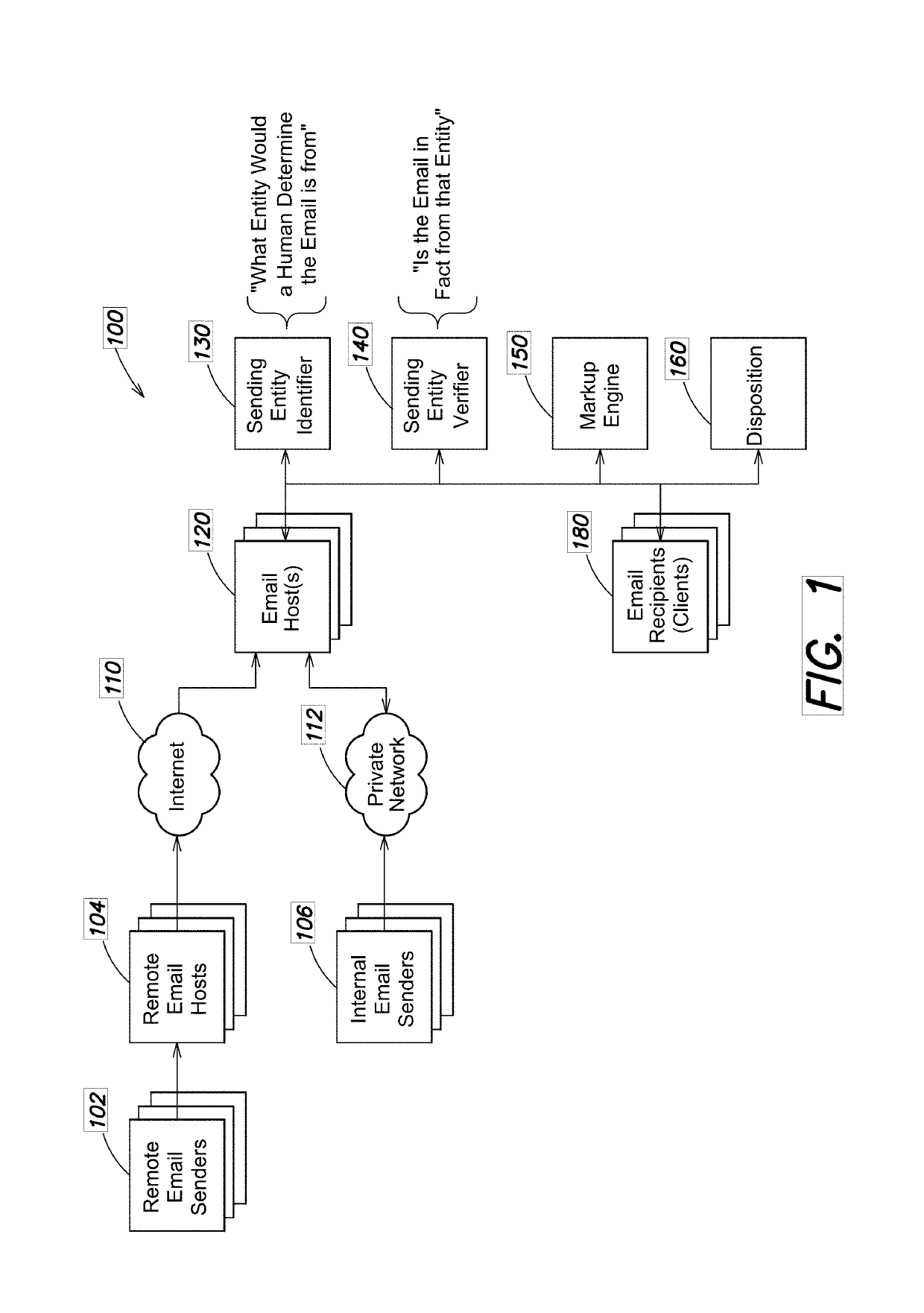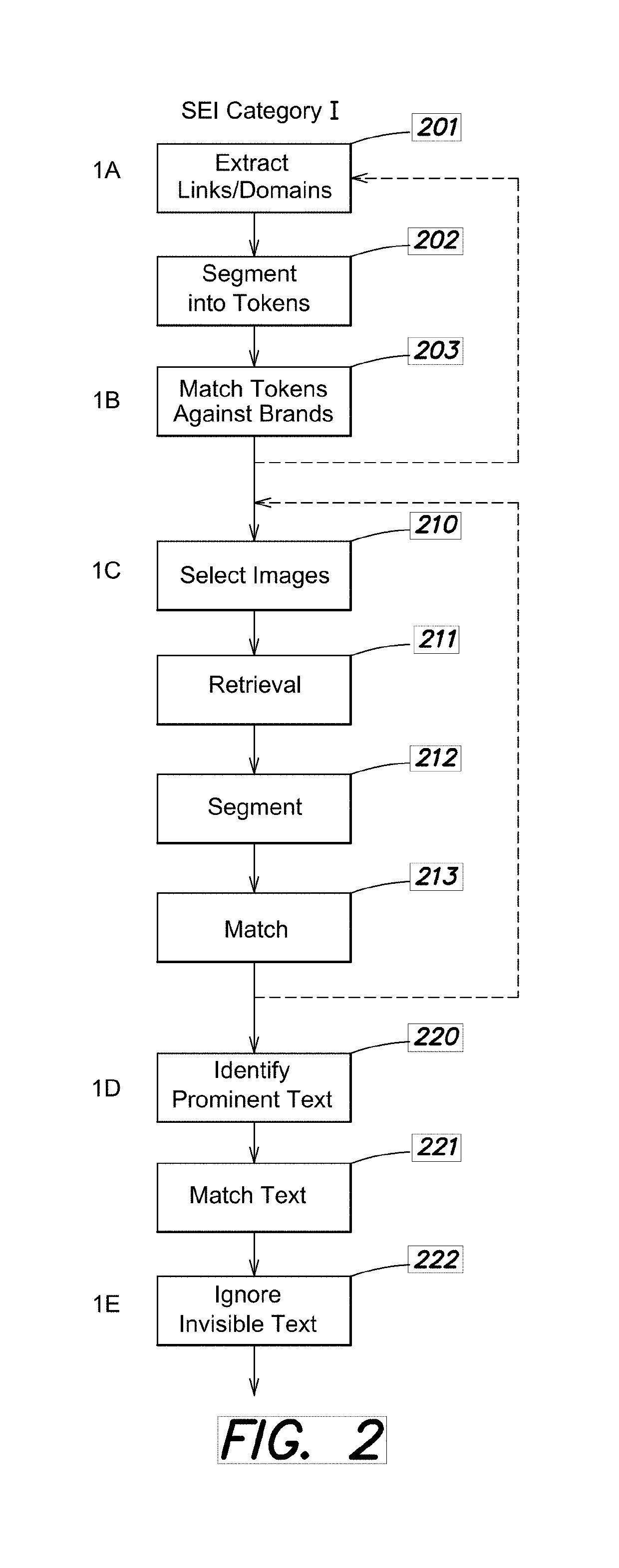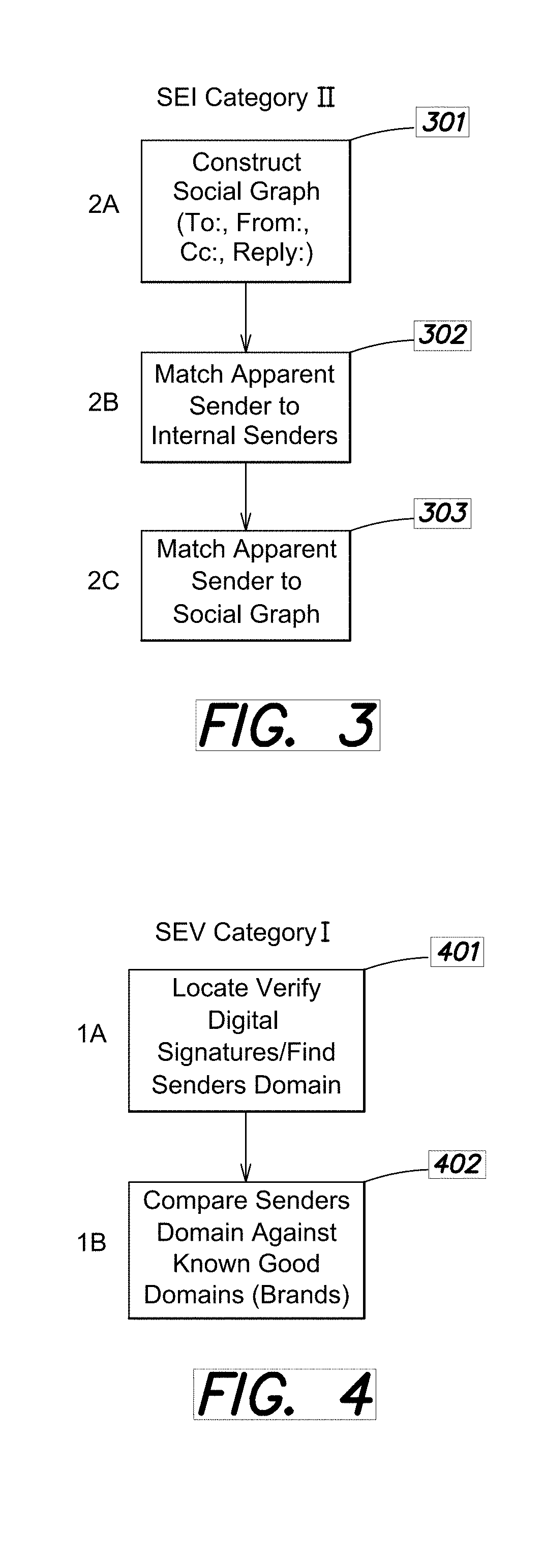Mail protection system
a technology of email protection and mail, applied in the field of electronic mail systems and methods, can solve the problems of little evidence in the mail itself that the email is not genuine, and the failure of attempts to apply these techniques to so-called phishing emails, etc., and achieve the effect of reducing the number of attempts to use the featur
- Summary
- Abstract
- Description
- Claims
- Application Information
AI Technical Summary
Benefits of technology
Problems solved by technology
Method used
Image
Examples
Embodiment Construction
[0034]An email protection system that uses the techniques described herein may be implemented in a number of different ways. A high level block diagram of a data processing environment that may provide an email protection service is shown in FIG. 1. The environment 100 includes one or more remote email senders 102, one or more remote email hosts 104, and internet connection(s) 110. Internal email senders 106 within an organization may use private (or local) network(s) 112. Emails arrive at one or more email hosts (MX) 120 from the remote and internal senders in this way or in other ways.
[0035]The email protection service uses a Sending Identity Identifier (SEI) 130 and Sending Entity Verifier (SEV) 140 to process emails from email host 120, as well as markup engine 150 and disposition engine 160, eventually forwarding processed emails to one or more email recipients (clients) 180.
[0036]SEI 130, SEV 140, markup engine 150 and / or disposition engine 160 may be implemented as program co...
PUM
 Login to View More
Login to View More Abstract
Description
Claims
Application Information
 Login to View More
Login to View More - R&D
- Intellectual Property
- Life Sciences
- Materials
- Tech Scout
- Unparalleled Data Quality
- Higher Quality Content
- 60% Fewer Hallucinations
Browse by: Latest US Patents, China's latest patents, Technical Efficacy Thesaurus, Application Domain, Technology Topic, Popular Technical Reports.
© 2025 PatSnap. All rights reserved.Legal|Privacy policy|Modern Slavery Act Transparency Statement|Sitemap|About US| Contact US: help@patsnap.com



